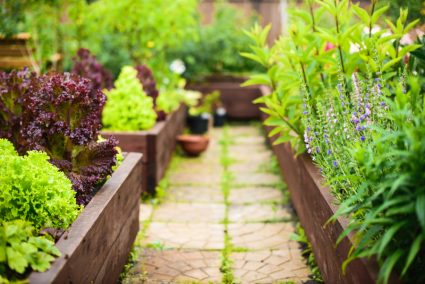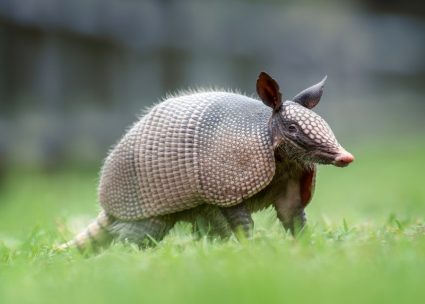
Spectracide is a well-known brand of lawn and garden care products, with a variety of solutions designed to control pests such as insects and weeds. But the question that many homeowners and garden enthusiasts often ask is, “Does Spectracide kill dandelions?” Let’s delve into this topic to provide a comprehensive answer.
Yes, Spectracide does kill dandelions. Products like Spectracide Weed Stop For Lawns Concentrate2 and Spectracide Weed Stop For Lawns Plus Crabgrass Killer Concentrate are designed to control more than 460 types of weeds, including dandelions. They work by killing the weeds on contact, reaching down to the root to prevent regrowth. Visible results can be seen in as little as 3 hours.
What is Spectracide?
Spectracide is a brand offering a wide range of products designed to control pests in outdoor spaces. From insect killers to weed killers and disease control solutions, Spectracide provides tools to keep your lawn and garden healthy and free from unwanted pests.
How Does Spectracide Work on Dandelions?
Yes, Spectracide does effectively kill dandelions. Products like Spectracide Weed Stop For Lawns Concentrate2 and Spectracide Weed Stop For Lawns Plus Crabgrass Killer Concentrate are designed to control more than 460 types of weeds, including dandelions, chickweed, clover, and yellow nutsedge.
These products kill weeds by contact, reaching down to the root of the plant. This ensures the entire plant is eliminated, preventing regrowth. Visible results can be seen in as little as 3 hours, making Spectracide a quick and effective solution for dandelion control.
Key Active Ingredients in Spectracide
The effectiveness of Spectracide against dandelions is due to its active ingredients: diquat dibromide, fluazifop-p-butyl, and dicamba (dimethylamine salt). Diquat dibromide is a non-selective herbicide that kills plants by disrupting their cellular processes. Fluazifop-p-butyl is a selective herbicide that targets grassy weeds. Dicamba is a synthetic auxin that causes uncontrolled growth in broadleaf plants, leading to their death. These ingredients work together to effectively control dandelions and other unwanted weeds.
When and How to Apply Spectracide
For maximum effectiveness against dandelions, apply Spectracide when temperatures are between 45 and 90 degrees Fahrenheit. Do not apply when daytime temperatures are above 90 degrees, as this can cause lawn injury.
Thoroughly spray the weeds until they are wet to ensure effective control. For spot treatments or small areas, use a pressure sprayer for better control. For larger areas, a ready-to-spray concentrate with a QuickFlip™ sprayer that attaches to your garden hose is recommended.
Always read the entire label before using the product and follow the recommended application rates and guidelines.
Safety Precautions and Potential Risks
While Spectracide is effective, it’s important to note potential risks and safety precautions. Spectracide is toxic to fish and aquatic invertebrates, and it may adversely affect non-target plants. To protect the environment, avoid applying the product directly to water or allowing it to contaminate water sources.
Some side effects of exposure to chemicals like diquat dibromide include coughing, burning at the site of contact, dizziness, loss of muscle coordination, nausea, and diarrhea. To minimize the risk of these side effects, follow the safety guidelines on the product label, such as wearing protective gear and keeping people and pets away from treated areas until the product has dried.
Comparing Spectracide with Other Weed Killers
Compared to other similar products, Spectracide has its pros and cons. It is considered less toxic than Roundup for humans and the environment. However, Roundup may be more effective in killing the entire weed, including its roots, while Spectracide only works on surfaces it directly touches, which may require more applications.
In a comparison with Ortho Weed Killer, Spectracide is a non-selective herbicide that will kill any vegetation it contacts, while Ortho is more selective and will not harm your lawn.
Conclusion
In conclusion, Spectracide is an effective solution for controlling dandelions in your lawn or garden. However, like any product, it’s crucial to understand how it works, when and how to apply it, and the potential risks involved. Always read and follow label instructions to ensure you’re using the product safely and effectively.
Frequently Asked Questions
Can I use Spectracide on all types of grass?
No, Spectracide is not safe for all types of grass. It is not recommended for use on Bahiagrass, Bentgrass, Centipedegrass, St. Augustinegrass (including Floratam), and carpetgrass as it may damage these types of turf.
How long should I wait to water my lawn after applying Spectracide?
It’s best to wait at least 24 hours after applying Spectracide before watering your lawn. This allows the product to be thoroughly absorbed by the weeds.
Can I use Spectracide on my vegetable garden to control weeds?
No, Spectracide is not recommended for use in vegetable gardens. It is designed for use on lawns and may harm your vegetables.
How often should I apply Spectracide for effective weed control?
The frequency of application depends on the severity of the weed infestation. However, you should not apply Spectracide more than twice per year on the same area.
Is Spectracide safe for pets?
While Spectracide is toxic if ingested, it is safe for pets once it has dried completely. It’s recommended to keep pets off the treated areas until the product has thoroughly dried.











